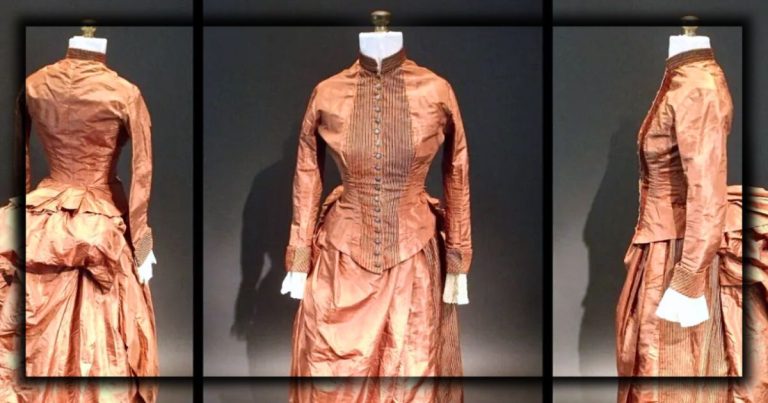
A beautiful dress can serve a woman well. It can even last a lifetime. But add pockets to that dress – and it opens up all sorts of possibilities. After all, isn’t that where all women keep their mysterious coded messages?
Or maybe Victorian women in the mid-1880s were the only ones who did that. But, the two century-old messages, found just 10 years ago by archaeologist and antique dress collector Sara Rivers Cofield, had been crumpled and hidden in the pockets of the perfectly preserved dress and were proving difficult to decipher. On the pages were texts that made no sense to anyone: “Bismark, omit, leafage, buck, bank,” and another one, “Calgary, Cuba, unguard, confute, duck, fagan.”

The cryptic code that was posted online for someone to solve. Photo courtesy of NOAA
But according to the National Oceanic and Atmospheric Administration (NOAA), these messages are no longer unsolved. Rivers Cofield first wrote about the messages she found on a blog in February 2014. The jumbled words became part of a list of 50 must “unsolvable” codes in the world, the NOAA said.
But a Canadian research computer analyst at the University of Manitoba made a startling find – the words, Wayne Chan said, were used to transmit local weather by telegraph.
Since telegraph companies charged by the number of words in a telegram, codes to compress a message to reduce the number of words became popular,” Chan said.
For example, the line with Bismark, likely referred to the weather in present-day Bismarck, North Dakota, on May 27, 1888, at 10 p.m. On the short list of five words, he said, each had weather data, such as air temperature, dew point or precipitation, baked into it.
“For the first time, the telegraph allowed news about the weather to travel faster than the weather itself,” Chan said. When Rivers Cofield first found the bronze-colored dress, she had no idea of the notes hidden inside, or even the hidden pockets themselves.
But, when Rivers Cofield turned the dress inside out, she found a pocket that had been hidden by the overskirt. “It wouldn’t have been possible to get at the pocket at all without causing a rip if someone had the dress on,” Rivers Cofield wrote.
It’s a bit of a private spot — it almost seems like it was protected,” she later told reporters.
As Rivers Cofield’s post went viral and people began coming up with theories, such as it was tied to the Civil War (unlikely, she said, due to the age of the dress), Chan took an interest in solving the code.

The title page of the 1892 weather code book that helped translate the notes. Photo courtesy of NOAA Central Library
He said he searched through 170 different codebooks with no luck – until he found a book that had a section on the U.S. Army Signal Corps’ weather code. It was then that he knew he was on to something, Chan said.
The length of the lines (around five to seven words) and the fact each started with the name of a place reminded him of weather codes he had seen. Chan said he reached out to a NOAA librarian and was able to find an 1892 telegraphic code book for weather. It confirmed that the codes were meteorological reports.
After more research, Chan said that he learned the messages were from Army Signal Service weather stations in the United States and Canada. The line “Bismark, omit, leafage, buck, bank” meant that in Bismarck, the temperature was 56 degrees Fahrenheit and the barometric pressure was 30.08 Hg — information encoded in the word “omit.”
The word “leafage” conveyed the dew point was 32 degrees at 10 p.m. Skies were clear with no precipitation and wind from the north (“buck”), blowing at 12 miles per hour (“bank”). Rivers Cofield and Chan still don’t quite know who owned the dress or how they ended up with the weather report. A handwritten name, ‘Bennett’, was scrawled on a tag inside the dress, but so far Chan said, there are no records of a Bennett working at NOAA during that time period.
But, regardless, the secret messages that were found are no longer secret. As Chan said, “Code cracked! Mystery solved.” Watch below for a look at the dress and its hidden messages!
Sources: Smithsonian Mag | Independent


